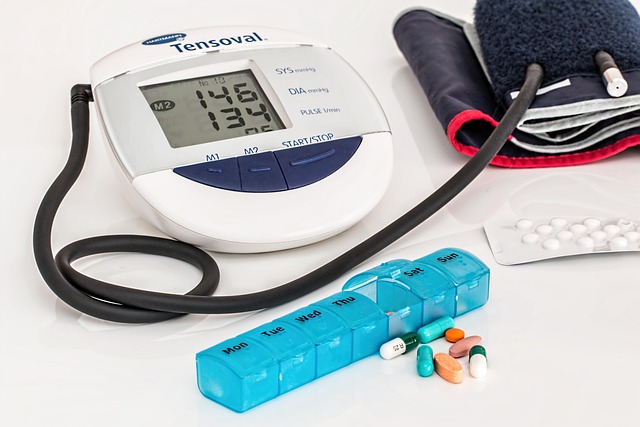Metastatic Breast Cancer 2025: Latest Treatment Developments
In 2025, metastatic breast cancer treatment is evolving faster than ever. New therapies, targeted drugs, and personalized approaches are changing the way doctors manage advanced disease, offering hope for improved outcomes and quality of life. Explore the latest breakthroughs and understand what modern oncology offers patients facing this challenging diagnosis.

Emerging targeted therapies for metastatic breast cancer
Targeted options are broadening beyond traditional HER2 and endocrine pathways. ADCs remain a major driver: trastuzumab deruxtecan has changed care for HER2-positive and HER2-low disease by linking a HER2 antibody to a potent cytotoxic payload, showing durable activity across prior lines. TROP-2–directed therapy with sacituzumab govitecan is established particularly in pretreated TNBC and is increasingly used in some HR+ settings after endocrine and CDK4/6 inhibitor progression. For HR+ disease with PI3K pathway changes, alpelisib (PIK3CA-mutant) and capivasertib (AKT inhibitor) with endocrine partners are central developments. HER3-targeted ADCs and next-generation SERDs are progressing in late-stage trials and may further expand options.
Immunotherapy breakthroughs for advanced breast cancer
Immunotherapy remains most impactful in TNBC. Pembrolizumab combined with chemotherapy is a standard for PD-L1–positive metastatic TNBC, improving outcomes compared with chemotherapy alone. Research now focuses on refining patient selection with PD-L1 scoring, tumor-infiltrating lymphocytes, and composite biomarkers, while exploring ADC–immunotherapy combinations to prime antitumor immunity. For HR+ disease, conventional checkpoint blockade has been less effective; trials are investigating immunomodulatory combinations—such as pairing checkpoint inhibitors with targeted agents or vaccines—to overcome immune resistance. Safety vigilance is critical as immune-related adverse events can occur across organ systems and require early recognition and management.
Personalized medicine approaches in oncology
Personalization starts with comprehensive profiling. Genomic testing for ESR1, PIK3CA, BRCA1/2, and other alterations informs therapy choices: elacestrant for ESR1-mutated HR+ disease after prior endocrine therapy, alpelisib for PIK3CA-mutant tumors, and PARP inhibitors (olaparib, talazoparib) for germline BRCA mutations. Liquid biopsies (ctDNA) are increasingly used to track resistance (for example, emergent ESR1 mutations) and guide sequencing. Molecular reclassification—such as HER2-low—opens targeted options where none existed previously. Multidisciplinary decision-making integrates comorbidities, prior lines of therapy, and patient goals to tailor regimens, dose intensity, and supportive care. The direction of travel in 2025 is iterative personalization: test, treat, monitor, and adapt.
Latest drug developments in metastatic breast cancer
Several agents are redefining standards or moving earlier in sequencing. For HER2-positive disease, tucatinib with trastuzumab and capecitabine remains a key regimen, including for brain metastases, while trastuzumab deruxtecan continues to set a high bar in pretreated settings with attention to interstitial lung disease monitoring. In HR+ disease, ribociclib’s overall survival data reinforce CDK4/6 inhibition as a backbone with aromatase inhibitors or fulvestrant. Capivasertib plus fulvestrant offers an option after progression, particularly with AKT-pathway alterations. In TNBC, sacituzumab govitecan is a go-to after prior therapies, and ongoing late-phase evaluations of additional ADCs (such as HER3-directed agents) may further diversify choices. These advances underscore the importance of biomarker testing and vigilant toxicity management to maintain treatment continuity.
Combination strategies for enhanced treatment efficacy
Combination therapy aims to amplify benefit while managing toxicity. In HR+ disease, CDK4/6 inhibitors with endocrine therapy remain the cornerstone first-line approach, with subsequent combinations tailored by resistance mechanisms (ESR1 mutations steering toward SERDs; PIK3CA/AKT changes guiding PI3K/AKT inhibitors). For HER2-positive disease, combining trastuzumab-based backbones with either tucatinib or ADCs enhances depth of response, though careful monitoring for cardiotoxicity and ADC-related ILD is essential. In TNBC, chemoimmunotherapy is standard for PD-L1–positive disease, and ADCs are often sequenced thereafter. Across subtypes, clinical trials are testing ADC–immunotherapy pairings and targeted–endocrine doublets to delay chemotherapy while sustaining control.
This article is for informational purposes only and should not be considered medical advice. Please consult a qualified healthcare professional for personalized guidance and treatment.
Conclusion
By 2025, metastatic breast cancer care reflects a precise, biology-led strategy that prioritizes the right drug for the right tumor profile, at the right time. ADCs are broadening impact across HER2-positive, HER2-low, and TNBC populations; endocrine therapy is being refined through resistance-informed switches; and immunotherapy remains a pillar in selected TNBC. Progress now hinges on robust testing, thoughtful sequencing, and proactive safety management to translate scientific gains into sustained, real-world benefit.




